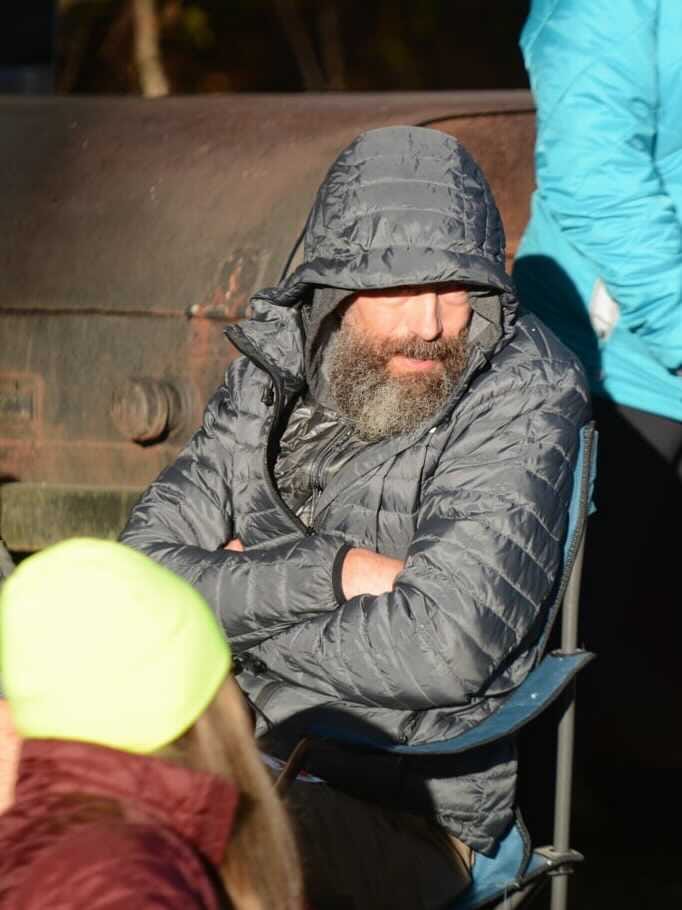Two post-race photos, from the finish lines of two races, a year apart:
The races were similar — same distance, similar terrain and weather, each (in succession) a personal record by more than 2 hours… each a strong effort I’m proud of.
But my post-race body language tells a different story.
The No Business look is unambiguous: it’s afterglow (as in “Why run ultras? Reason #6: Afterglow” from My running why’s)
The Pinhoti shot captures something more complicated.
I ran a good race at Pinhoti. Despite a pre-race injury that almost sidelined me, I managed a PR by over 2 hours. It was a textbook demonstration of planning and patience, and as I sat by the fire in the light of the early-morning sun, I should have been basking in a full-on afterglow even better than before.
The afterglow is there, but it’s corrupted — confused by my ambition, diminished by my greed. I wanted more.
The full story of my race is here: Pinhoti 100, but the pertinent part for this discussion has to do with my reach goal — a sub-24 hour finish. I wanted the same thing last year at No Business, but last year it slipped away early, and I never felt like it was mine. This time, I flirted with it for most of the race, and it was in play right up to the end.
Getting close to a goal can give us the illusion that we already have it. And our irrational minds treat loss differently than desire (it hurts more to have something taken than never to have it). We know one thing, but we feel another.
So in the finish-line battle of emotions between “Wow! I just ran 100 miles way faster than I ever did before!” and “Damn! I had it — it was right there and I let it slip away” the perceived loss can feel more powerful than the accomplishment. But our rational mind answers with valid consolation, and the result is an emotional bewilderment that has me sitting there with crossed arms and shrouded face and empty stare.
The bewilderment of simultaneous success and failure is not new (I cover a previous occurrence here: Steamtown 2009). In fact, if you’re in the habit of giving yourself a hierarchy of goals, you set yourself up for it every time you race.
That hierarchy, with its multiple layers of success, means that success is no longer a yes-or-no question, but it also firmly establishes a spectrum of better-and-worse. For a competitive (and potentially greedy) person, there might not be much difference.
It’s not that pushing yourself to a higher level of performance is a bad thing. In fact the desire to improve is an essential element of our humanity. But there is some subtle tipping point where healthy desire and ambition becomes greed. And that greed can squelch your gratitude and steal your well-earned afterglow.
Another symptom: I reread my Pinhoti report, and noticed I spent more time than normal on irritations, frustrations, and failures. At places my tone tends towards arrogance. It’s the greed talking, covetous for what might have been, and that’s not how I want to be.
Running goals are just another version of an old dilemma with many faces. I’ve written about it before:
Maybe that’s the ultimate test for a (capital-H) Human: that we must find a balance between that gratitude for what we have and that greed for more of it. To somehow be both satisfied and searching at the same time, to reconcile our gifts against our hunger.
I had no recipe for it then, and I still don’t.
But tomorrow is Thanksgiving Day here in the U.S., when we consciously try to elevate gratitude and make it a primary impulse.
Trying to hold onto that might be a good way to start.






